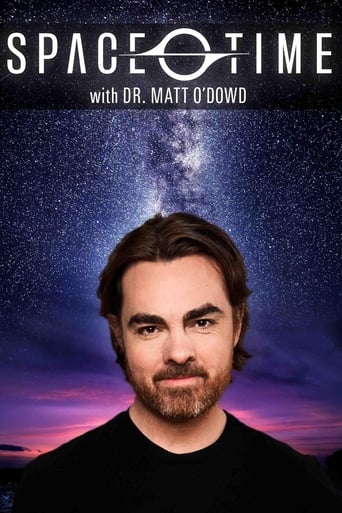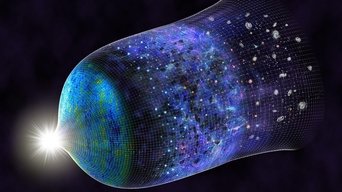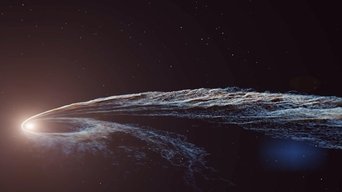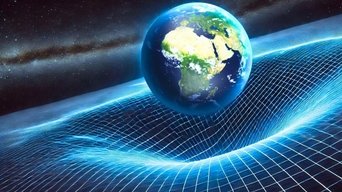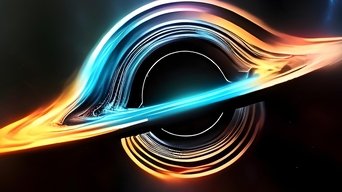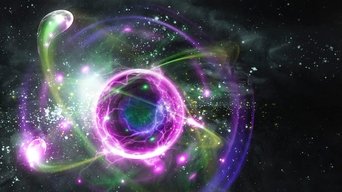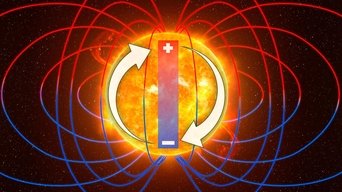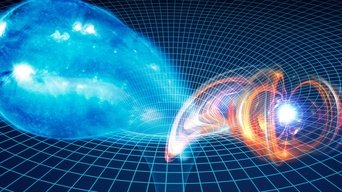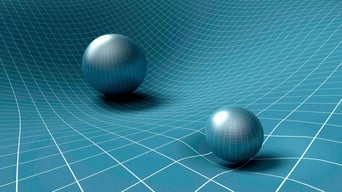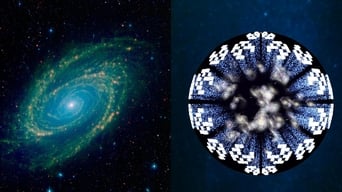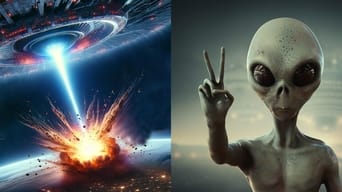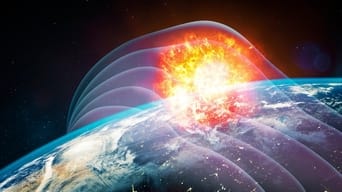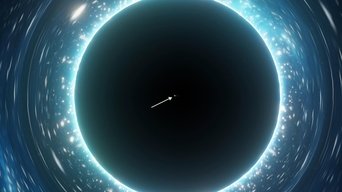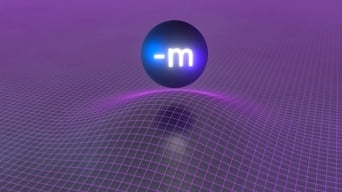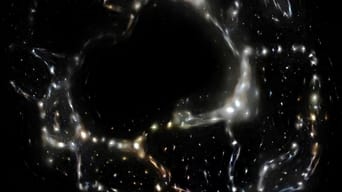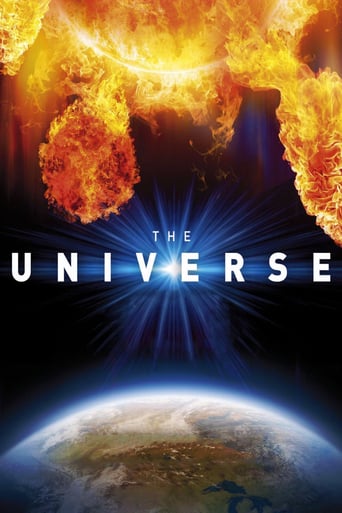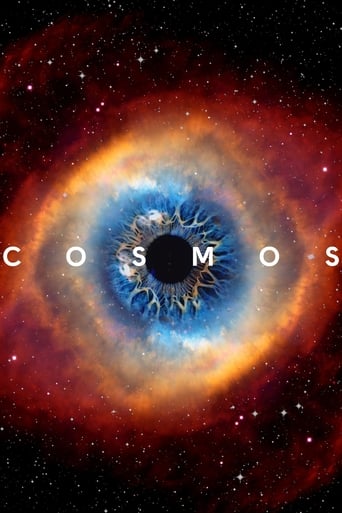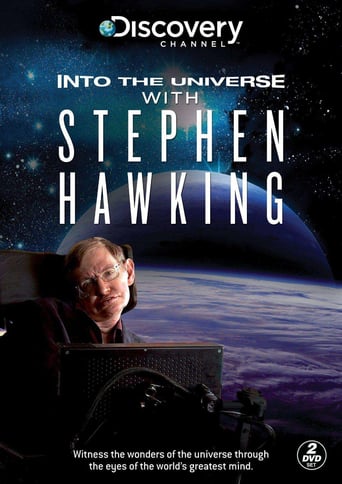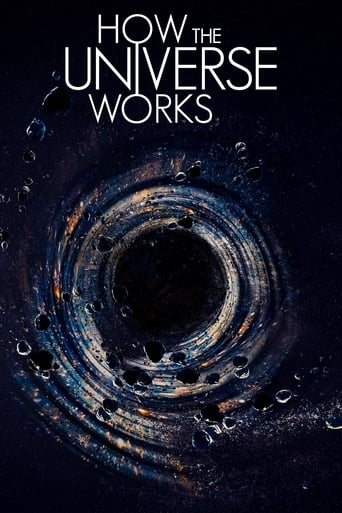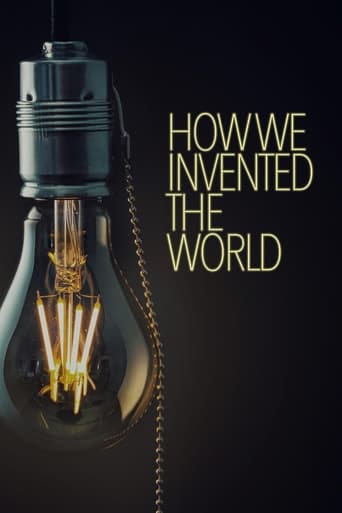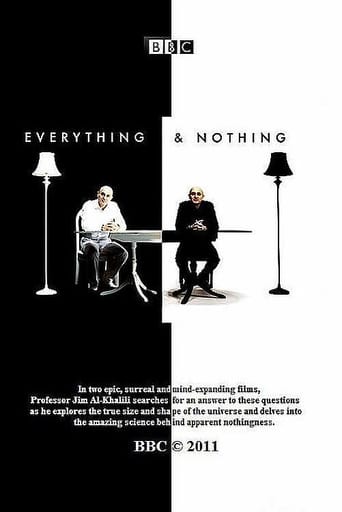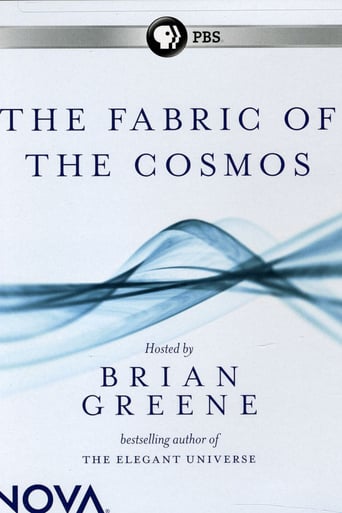PBS Space Time Season 2024
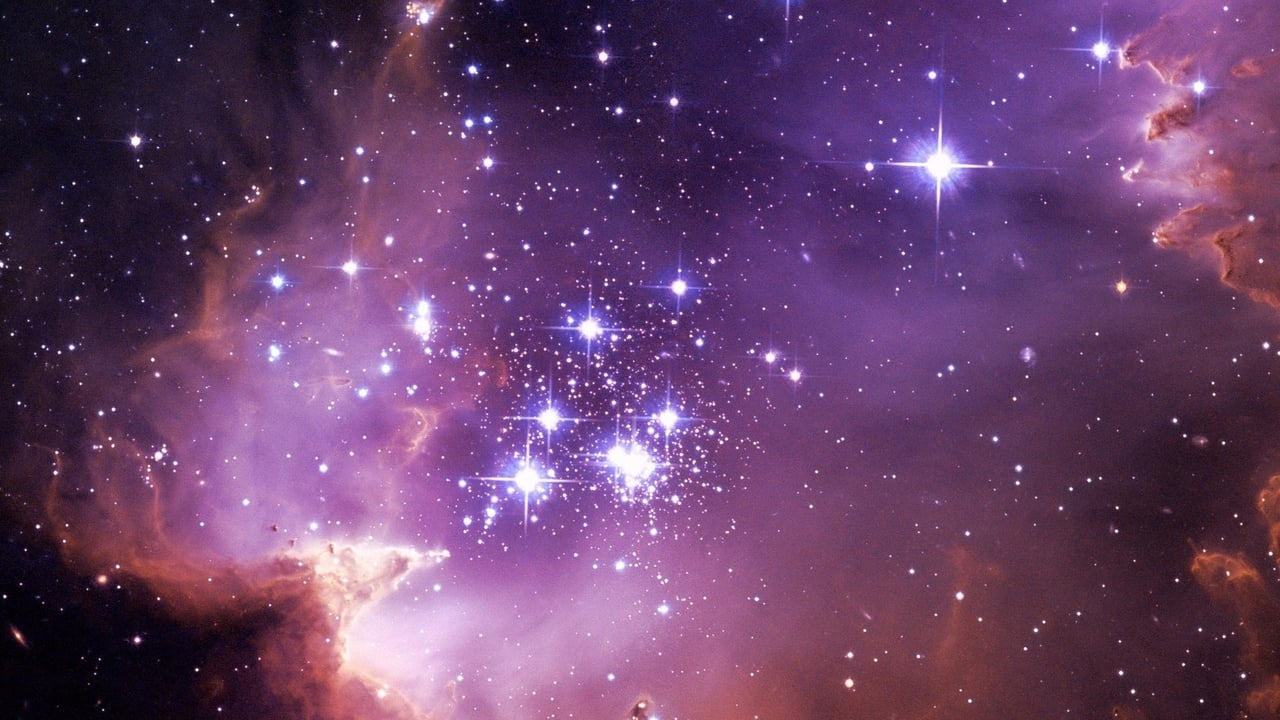
Space Time explores the outer reaches of space, the craziness of astrophysics, the possibilities of sci-fi, and anything else you can think of beyond Planet Earth with our astrophysicist host: Matthew O’Dowd.
Watch NowWith 30 Day Free Trial!
PBS Space Time
2015
Space Time explores the outer reaches of space, the craziness of astrophysics, the possibilities of sci-fi, and anything else you can think of beyond Planet Earth with our astrophysicist host: Matthew O’Dowd.
Watch Trailer
With 30 Day Free Trial!
PBS Space Time Season 2024 Full Episode Guide
There are cosmic events so powerful that they leave permanent marks on the fabric of the universe itself. Imagine two colossal black holes spiraling into each other, yes they send ripples in the fabric of spacetime—gravitational waves that we’ve only recently learned to sense. Ripples pass, leaving the pond … or the universe … unchanged when they’re gone. But ripples aren’t the only type of wave. There’s another type of wave that leaves a permanent mark—a memory etched in the fabric of the universe. They’re akin to gravitational tsunamis, and we’re on the verge of being able to detect them.
Imagine a world where humanity masters every planetary resource available to it—our first step on the famous Kardeshev scale of technological advancement. How distant is that step? Will we even become a true Type-1 civilization, and how can we get there?
Neutron stars aren't dark matter--we figured that out a while ago. But new research is telling us that they may be dark matter factories. They may produce the exotic axion, one of the most popular dark matter candidates.
We know that the universe is getting bigger. And we know that the speed that the universe is getting bigger is also getting bigger. The standard assumption is that the acceleration rate is itself constant, which will surely result in ultimate heat death. But a recent survey of primordial sound waves frozen into the way galaxies are sprinkled through the universe reveals that this fate is now in question.
Here’s the story we like to tell about the beginning of the universe. Space is expanding evenly everywhere, but if you rewind that expansion you find that all of space was once compacted in an infinitesimal point of infinite density—the singularity at the beginning of time. The expansion of the universe from this point is called the Big Bang. We like to tell this story because it's the correct conclusion from the description of an expanding universe that followed Einstein's general theory of relativity back in the 19-teens. But since then we've learned so much more since then. Does our modern understanding of the universe still insist on a point-like Big Bang? Recent work actually gives us a way to avoid the beginning of time.
If you track the motion of individual stars in the ultra-dense star cluster at the very center of the Milky Way you’ll see that they swing in sharp orbits around some vast but invisible mass—that’s the Sagittarius A* supermassive black hole. These are perilous orbits, and sometimes a star wanders just a little too close to that lurking monster, leading to its utter destruction in the spectacular phenomenon known as a tidal disruption event. We’ve never seen a TDE in the Milky Way, but we’ve seen them in distant galaxies—and we now know how to spot stellar destructions so extreme that they reveal properties of the black hole itself.
If we discover how to connect quantum mechanics with general relativity we’ll pretty much win physics. There are multiple theories that claim to do this, but it’s notoriously difficult to test them. They seem to require absurd experiments like a particle collider the size of a galaxy. Or we could try to physics smarter, instead of physicsing harder. Let’s talk about some ideas for quantum gravity experiments that can be done on a non-galaxy-sized lab bench, and in some cases already have been done.
The holy grail of theoretical physics is to find the long-sought theory of quantum gravity. But what if this theory is as mythical as the grail of legend? What if gravity isn’t weirdly quantum at all, but rather … just a bit messy? Or random? So says the postquantum gravity hypothesis of Jonathan Oppenheim.
Scientists have been slowly extending the periodic table one element at a time, pushing to higher and higher masses, and have discovered some incredibly useful materials along the way. But the elements at the current end of the table are so unstable that they decay almost as soon as they’re created in our particle accelerators. Have we reached the end of the line of discoverable elements? There are new rows of the periodic table to unlock, and more stable versions of known heavy elements to synthesize—and while our accelerators are coming up short, astronomers have found a strange cosmic phenomenon that may populate the periodic table beyond our wildest dreams.
The primary characteristic that defines black holes is in the name. Black holes are black. The gravitational pull at the event horizon is so powerful that not even light can escape. In this case, black means absence of light. We also think of black as indicating absence of colour. But it turns out there is a way to make a coloured black hole—as long as by colour you mean quantum chromodynamic charge.
Nobel laureate Roger Penrose is widely held to be one of the most brilliant living physicists for his wide-ranging work from black holes to cosmology. And then there’s his idea about how consciousness is caused by quantum processes. Most scientists have dismissed this as a cute eccentricity—a guy like Roger gets to have at least one crazy theory without being demoted from the supersmartypants club. The most common argument for this dismissal is that quantum effects can’t survive long enough in an environment as warm and chaotic as the brain. Well, a new study has revealed that Penrose’s prime candidate molecule for this quantum activity does indeed exhibit large scale quantum activity. So was Penrose right after all? Are you a quantum entity?
Warp drives may or may not be possible, but if they are then could a distant alien civilization’s warp fields produce gravitational waves that we could see here on Earth? According to a recent study.. Actually maybe, at least eventually. And we now know just what to look for and how to look for it.
All particles belong to two large groups: fermions like protons and electrons make everything we consider "matter", while bosons like photons and gluons transmit the fundamental forces. And that about covers the universe: matter moving through space and time under the action of forces. But what if we could create particles in between these two possibilities. Physics says these neither matter nor force anyons can exist, and they may have some pretty incredible uses. They’re called anyons.
Solar activity is still increasing in a sunspot cycle that is proving way more intense than scientists predicted. Just how much stronger is it going to get?
So you’ve decided to jump into a black hole. Good news: as long as the black hole is big enough you can sail through the event horizon without harm and get to experience the interior of the black hole before you’re annihilated by the central singularity. Or so we once thought. These days, quite a few physicists believe that the only way to avoid horrible contradictions in fundamental physics generated by black holes is for all them to be surrounded by screens of extreme energy that prevent anything from ever entering the event horizon. Sounds outlandish? Welcome to black holes. So let’s find out why many of our most brilliant physicists take these black hole firewalls deadly seriously.
Cern's Large Hadron Collider routinely collides particles at energies equivalent to a fraction of a second after the Big Bang. If this worries you, then the following fact will either put you at ease or scare the hell out of you. And that's that a particle with the energy of an LHC collision hits every square kilometer of the Earth every single second. And we only relatively recently figured out where these cosmic rays are coming from.
Black holes are inevitable predictions of general relativity—our best theory of space, time and gravity. But they clash in multiple ways with quantum mechanics, our equally successful description of the subatomic world. One such clash is the black hole information paradox—and a proposed solution—black hole complementarity—may forced us to radically rethink what it even means to say that something to exists.
In the far future we may have advanced propulsion technologies like matter-antimatter engines and compact fusion drives that allow humans to travel to other stars on timescales shorter than their own lives. But what if those technologies never materialize? Are we imprisoned by the vastness of space—doomed to remain in the solar system of our origin? Perhaps not. A possible path to a contemporary cosmic dream may just be to build a ship which can support human life for several generations; a so-called generation ship.
Meet Alice and Bob, famous explorers of the abstract landscape of theoretical physics. Heroes of the gerdankenexperiment—the thought experiment—whose life mission is to find contradictions in the deepest layers of our theories. Today our intrepid pair are jumping into a black hole. Again. Why? Well, to determine the fundamental structure of spacetime and its connection to quantum entanglement of course.
The Moon has been one of the most important theoretical stepping stones to our understanding of the universe. We’ve long understood that it could also be our literal stepping stone: humanity’s first destination beyond our atmosphere.
Of all the astronomical phenomena you can witness, the total solar eclipse has to be the most visceral--the most in-your-face reminder that our reality consists of giant balls of rock spinning around stars. It's also the eclipse and phenomena like it that set us on the path to understanding that reality in the first place.
There are four fundamental forces - the strong and weak nuclear forces, electromagnetism, and gravity. Except maybe gravity is no more fundamental than the force of a stretched elastic band. Maybe gravity is just an entropic byproduct—an emergent effect of the universe’s tendency to disorder. If you allow entropy to keep you in your seat for a bit, I’ll tell you all about it.
Space seems fundamental. To build a universe, surely you need something to build it on or in. Many, maybe most physicists now think that the fabric of space emerges from something deeper. And perhaps the most existentially disturbing such proposal is that our 3-D universe is just the inward projection of an infinitely distant boundary. A hologram, or sorts. Let’s see how that can actually work, and what the holographic principle really says about the “realness” of this universe.
In 1974 we sent the Arecibo radio message towards Messier 13, a globular cluster near the edge of the Milky Way, made up of a few hundred thousand stars. The message was mostly symbolic; we weren’t really expecting a reply. Yet surely other civilisations out there are doing the same thing. So, why haven’t we heard anything? What if the silence from the stars is a hint that we shouldn’t be so outgoing? What if aliens are deliberately keeping quiet for fear that they might be destroyed?
EMPs aren’t science fiction. Real militaries are experimenting on real EMP generators, and as Starfish Prime showed us, space nukes can send powerful EMPs to the surface. So what exactly is an EMP, and how dangerous are they?
It's not too often that a giant of physics threatens to overturn an idea held to be self-evident by generations of physicists. Well, that may be the fate of the famous Penrose Singularity Theorem if we're to believe a recent paper by Roy Kerr. Long story short, the terrible singularity at the heart of the black hole may be no more.
This is what we astronomers call a blob, or a smudge, if you want to get really technical. It may not look like much from here, but what do you expect for something near the literal edge of the observable universe. If you were there when this light was emitted, you’d A. be at the beginning of time, and B. be looking at an entire galaxy containing an enormous black hole at its heart. It’s the most distant black hole we’ve semi-directly detected. That’s cool enough on its own, but as an added bonus this one smudge may have solved the mystery of the origin of the supermassive black holes in our universe.
From hoverboards to flying cars to cloud cities, anti-gravity is a staple of science fiction and our dream of a less Earth-bound future. But in the real universe gravity appears to be a purely attractive force. Feels like its main MO is keeping us stuck to the surface of this lonely rock. But maybe if we science hard enough we can remove the fiction from science fiction. For the sake of our flying cars we should at least try. And for many years, physicists have wondered whether a certain well-known exotic material may experience gravitational repulsion from the Earth. That material is antimatter, and physicists at CERN have just completed a very long and very difficult experiment to answer a seemingly simple question: does antimatter fall down, or does it fall up?
Two of the greatest mysteries in cosmology are the nature of dark energy and the apparent conflict in our measurements of the expansion rate of the early versus the modern universe that even dark energy can’t account for. Could both of these be explained by looking to a part of the universe that we’ve largely ignored so far? Could cosmic voids be driving the universe?
Free Trial Channels
Seasons


